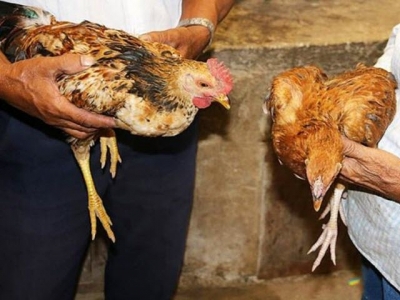Smartphone app to let farmers test for poultry infection
System will help farmers act fast before disease can spread and potentially infect people.
 Using maize gluten as an alternative protein source for poultry, pig feeds
Using maize gluten as an alternative protein source for poultry, pig feeds Maize gluten protein can replace part of soybean meal in diets, but like all ingredients, it has its positive and negative aspects that require attention during
 Everything You Need to Know About Duck Eggs
Everything You Need to Know About Duck Eggs The three major poultry products in the United States chicken, chicken eggs, and turkey so thoroughly dominate the economic landscape that the USDA
 Poultry performance improves over past decades
Poultry performance improves over past decades Advances in modern layer performance mean gains of almost three extra eggs per bird annually. Poultry performance improves over past decades
 10 ideas that will change poultry nutrition and health
10 ideas that will change poultry nutrition and health In the view of one prominent poultry scientist, nutrition is on the edge of breakthroughs. 10 ideas that will change poultry nutrition and health
 Reducing feed phosphate cost for laying hens
Reducing feed phosphate cost for laying hens Enzyme benefits offer the potential to formulate with degraded specifications without impacting performance. Reducing feed phosphate cost for laying hens
 Backyard Flock Tip: Egg Laying Behavior
Backyard Flock Tip: Egg Laying Behavior Although hens typically prefer to lay eggs in nests, it is not unusual for some eggs to be laid on the floor of the hen house or on the ground.
 Gene expression tied to dimorphism in chickens
Gene expression tied to dimorphism in chickens New study explores sex differences in expression of genes involved in control of food intake and bodyweight in chickens.
 Latest advances in poultry health
Latest advances in poultry health The application of molecular biology to determine the genomic structure, classification and pathogenesis of disease-causing agents in poultry was a consistent
 Advances in nutrition
Advances in nutrition Egg production and quality were evaluated over 36 weeks of production from 17 weeks of age onwards in Hy-Line brown-feathered hens.
 Beware of cold temperatures affecting feed intake and layer performance
Beware of cold temperatures affecting feed intake and layer performance ABN nutrition experts suggest feed programs may need to be revised. Beware of cold temperatures affecting feed intake and layer performance
 Inclusion of DDGS
in poultry diets
Inclusion of DDGS
in poultry diets With about 70% of the cost of poultry production tied up in feed costs, there is a never ending quest for affordable feed ingredients.
 How Much DDGS Can be Incorporated in a Layer Feed?
How Much DDGS Can be Incorporated in a Layer Feed? Corn DDGS contains approximately 27 per cent protein, 10 per cent oil, 0.48 per cent available phosphorus, and 2,850 kcal/kg (11.9 MJ/kg) nitrogen-corrected
 12 ways to eliminate odour on poultry farms
12 ways to eliminate odour on poultry farms Statutory authorities have a duty to deal with odour complaints from a variety of sources, including poultry farming.
 Research focuses on gait problems in broilers
Research focuses on gait problems in broilers Aarhus researchers among first to focus on causes and effects of impaired walking ability in conventional broilers where lameness is ruled out.
 To feed or not to feed? The importance of early chick feeding
To feed or not to feed? The importance of early chick feeding Dr Keith Bramwell, senior technical advisor to the Jamesway Incubator Company, addresses whether feeding individual chicks immediately after hatch is beneficial
 Fatty acid content of egg yolks on researchers' radar
Fatty acid content of egg yolks on researchers' radar Researchers with Pennsylvania State University explored the interaction of dietary high-oleic acid soybean oil (HOSO) and high-a-linolenic acid (ALA) flaxseed
 Mash or crumbled feed for layers?
Mash or crumbled feed for layers? With half the world feeding mash feed to layers, and the other half feeding crumbles, which feed form is better than the other, and why?
 How much DDGS will benefit layers?
How much DDGS will benefit layers? Study shows positive impact on the bottom-line without a negative impact on performance.
 Selecting dietary energy levels for layers
Selecting dietary energy levels for layers Even when the same energy and protein intake is maintained for all three energy levels, egg size will be larger in hens fed the high energy diets.
